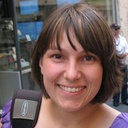Lectin histochemistry of pathological bones.
Raktažodžiai
Santrauka
Our present knowledge of the structure and function of glycoproteins in bone tissue is very limited. The introduction of lectins into histology offered principally a new approach for studying the presence and chemical structure of glycoproteins in tissue sections. In this paper these highly specific carbohydrate binding molecules have been used to characterize glycoproteins in the cellular elements of normal bone and benign bone lesions. We retrospectively examined 35 benign bone lesions (7 fibrous dysplasias, 5 foreign body granulomas, 5 epulis, 8 osteoid osteomas, 10 giant cell tumors) together with 25 normal bone samples. In normal bone samples and all cases of benign bone lesions, two characteristic types of PNA binding were found after neuraminidase digestion in osteoclasts. In osteoclasts which did not adhere to bone surface, diffuse intracytoplasmic PNA binding was seen, and following the adherence to the bone surface, it disappeared, and the resorption zone became stainable. We assume that this PNA binding glycoprotein is formed in the cytoplasm of osteoclasts, then, after the activation of osteoclasts, the glycoprotein gets accumulated at the resorption zone of the cytomembrane where it plays a significant role in the bone resorption.


